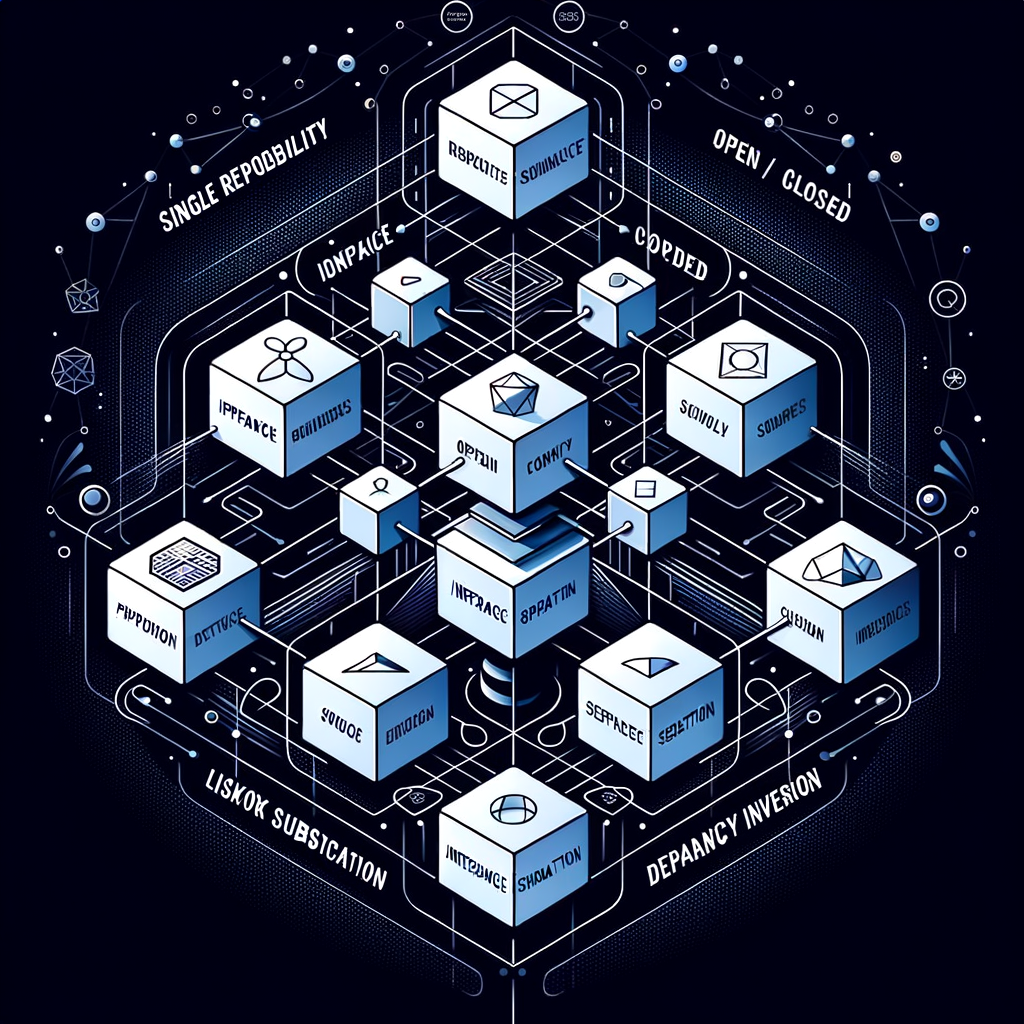
Clean code isn’t just about making your future self happy. It’s about building software that survives and thrives in the real world. Requirements change fast. Teams evolve. And if your code isn’t maintainable, things fall apart.
That’s where the SOLID principles come in. These five software design rules help you write code that’s easy to work with, even when the pressure is on. They were originally defined by Robert C. Martin (aka Uncle Bob), and they’ve become a kind of north star for writing clean, robust object-oriented code.
What is “Clean Code”?
Before we jump into SOLID, let’s clarify what we’re aiming for.
Clean code should be:
- Readable – Other developers can understand it quickly.
- Maintainable – Easy to fix and update when things change.
- Extensible – You can add features without breaking things.
The SOLID principles help you hit all three.
The SOLID Principles (Explained Simply)
Each of these principles supports writing better-structured, more understandable code. Let’s break them down with examples. And for anyone newer to coding, look out for the 🔰 “New to coding? Start here” sections.
🗾 S — Single Responsibility Principle (SRP)
“A class should have only one reason to change.”
This principle says a class should do one thing, and one thing only. When classes do too much, they’re harder to update and easier to break.
❌ Problem Example
class UserManager:
def create_user(self, email, password):
pass
def send_welcome_email(self, user):
pass
def log_user_creation(self, user):
pass
Code language: Python (python)This class handles user creation, emailing, and logging. That’s three jobs. Three reasons to change.
✅ Better Approach
class UserCreator:
def create_user(self, email, password):
pass
class EmailService:
def send_welcome_email(self, user):
pass
class UserLogger:
def log_user_creation(self, user):
pass
Code language: Python (python)Each class now has a clear job. Changes are isolated. Things stay simple.
🔰 New to coding? Start here:
Think of a class like a department in a company. You wouldn’t expect HR to also run marketing and IT. Keep each class focused on one role.
🖋️ Why It Matters
SRP makes code easier to test, maintain, and reason about. Some devs say “one reason to change” is too vague—and that’s fair. But it pushes you to think about how your code is organized, which is always worthwhile.
🗭 O — Open/Closed Principle (OCP)
“Software should be open for extension, but closed for modification.”
You should be able to add new features without rewriting existing code. This is safer and more scalable.
❌ Problem Example
class PaymentProcessor:
def process_payment(self, payment_type, amount):
if payment_type == "credit_card":
pass
elif payment_type == "paypal":
pass
Code language: Python (python)Adding a new payment type means editing this method. That’s risky.
✅ Better Approach
from abc import ABC, abstractmethod
class PaymentProcessor(ABC):
@abstractmethod
def process(self, amount):
pass
class CreditCardProcessor(PaymentProcessor):
def process(self, amount):
pass
class PayPalProcessor(PaymentProcessor):
def process(self, amount):
pass
class BitcoinProcessor(PaymentProcessor):
def process(self, amount):
pass
Code language: Python (python)Now you can add new types by writing a new class. No need to touch old code.
🔰 New to coding? Start here:
Imagine building with Lego instead of glue. When code is modular, you can swap and add pieces without redoing the whole thing.
🖋️ Real-World Relevance
Web frameworks like Django and Flask follow OCP. They let you add plugins and middleware without changing the core system.
🔵 L — Liskov Substitution Principle (LSP)
“Subtypes must be substitutable for their base types.”
This means if you use a subclass in place of a parent class, it should work the same way.
❌ Problem Example
class Bird:
def fly(self):
return "Flying high!"
class Penguin(Bird):
def fly(self):
raise Exception("Penguins can't fly!")
Code language: Python (python)A Penguin is a Bird, but this code breaks that promise.
✅ Better Approach
class Bird:
def move(self):
pass
class FlyingBird(Bird):
def move(self):
return "Flying"
class FlightlessBird(Bird):
def move(self):
return "Walking"
class Penguin(FlightlessBird):
def move(self):
return "Sliding on ice"
Code language: Python (python)Now the behavior stays consistent.
🔰 New to coding? Start here:
Think of this like ordering a coffee. If you ask for a latte, you shouldn’t get a milkshake. Substitutes should behave as expected.
🖋️ Why It Matters
LSP helps keep polymorphism safe. You can use any subclass without fear of surprise behavior.
🔳 I — Interface Segregation Principle (ISP)
“Clients should not be forced to depend on interfaces they do not use.”
Give each class or interface only the methods it actually needs.
❌ Problem Example
class AllInOnePrinter:
def print_document(self, doc): pass
def scan_document(self, doc): pass
def fax_document(self, doc): pass
class SimplePrinter(AllInOnePrinter):
def print_document(self, doc): pass
def scan_document(self, doc):
raise NotImplementedError()
def fax_document(self, doc):
raise NotImplementedError()
Code language: Python (python)✅ Better Approach
class Printer:
def print_document(self, doc): pass
class Scanner:
def scan_document(self, doc): pass
class FaxMachine:
def fax_document(self, doc): pass
class SimplePrinter(Printer):
def print_document(self, doc): pass
class AllInOnePrinter(Printer, Scanner, FaxMachine):
def print_document(self, doc): pass
def scan_document(self, doc): pass
def fax_document(self, doc): pass
Code language: Python (python)🔰 New to coding? Start here:
Think of this like apps on your phone. You don’t want the Notes app asking for your camera unless it needs it.
🖋️ Why It Matters
Small, focused interfaces reduce confusion and make code easier to test and maintain.
🔶 D — Dependency Inversion Principle (DIP)
“Depend on abstractions, not concretions.”
High-level modules (business logic) shouldn’t depend directly on low-level modules (database, email service). Both should depend on abstractions.
❌ Problem Example
class EmailService:
def send_email(self, message): pass
class NotificationService:
def __init__(self):
self.email_service = EmailService()
def send_notification(self, message):
self.email_service.send_email(message)
Code language: Python (python)✅ Better Approach
from abc import ABC, abstractmethod
class MessageSender(ABC):
@abstractmethod
def send(self, message): pass
class EmailSender(MessageSender):
def send(self, message): pass
class SMSSender(MessageSender):
def send(self, message): pass
class NotificationService:
def __init__(self, sender: MessageSender):
self.sender = sender
def send_notification(self, message):
self.sender.send(message)
Code language: Python (python)🔰 New to coding? Start here:
Think of an interface like a remote control. You don’t need to know how the TV works inside—just that the button does what it says.
🖋️ Bonus: Easier Testing
Because you’re depending on abstractions, it’s easy to swap in mocks or fakes for testing.
SOLID Isn’t a Silver Bullet
Some criticisms are valid:
- Over-abstraction — Too many layers can make code hard to follow
- Subjective interpretations — Especially around “single responsibility”
- Performance costs — More indirection can slow things down
But if you’re working on long-lived or growing projects, SOLID pays off. Think of it as scaffolding, not a cage.
When SOLID Principles Shine
- Large teams — Helps keep work aligned and avoid conflict
- Changing requirements — Makes updates less painful
- Legacy systems — Gives structure to messy codebases
Common Mistakes (And How to Dodge Them)
- Blindly applying rules — Don’t force patterns where they don’t belong
- Abstracting too early — Wait until the complexity shows up
- Forgetting the big picture — Your goal is maintainable software, not academic purity
How SOLID Shows Up in Modern Development
- SRP → Microservices and single-purpose modules
- ISP → React components that do one thing
- DIP → Dependency injection frameworks like Spring or Angular
You don’t need to write Java or C# to use SOLID ideas. The patterns work across paradigms.
Final Thoughts
SOLID principles help you build systems that don’t fall apart under pressure. They guide your decisions and make code more readable, flexible, and testable.
Don’t treat them as dogma. Learn them, understand the problems they solve, and apply them where it makes sense.
Your codebase (and your future teammates) will thank you.
About This Article
This guide was created with the assistance of Claude and ChatGPT, and carefully curated, guided, and reviewed by a real human with 20 years of experience in software engineering.
Want to go deeper? Read Clean Code by Robert Martin (link) or check out DigitalOcean’s SOLID tutorials for hands-on examples.
